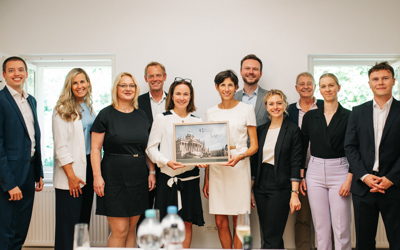
Insights


Sustainability in procurement isn’t just a compliance tick-box, it’s the secret ingredient for commercial success. Our white paper serves up practical strategies and negotiation frameworks to help procurement teams bake sustainability into every supplier relationship - unlocking cost savings, resilience and innovation. Discover how a holistic, partnership-driven approach can turn sustainability into your competitive advantage.

Is your business plan truly joint, or just adjacent? Joint Business Planning (JBP) isn’t just a “nice-to-have” anymore, it’s a strategic must. When done right, it becomes a living partnership that helps companies pivot fast, optimize inventory and co-invest in innovation, even when the market gets messy. This article shares actionable guidance on building JBPs that go beyond annual check-ins. These are dynamic, collaborative agreements that align suppliers and retailers around shared goals- with the consumer as the ultimate judge of success.

Many organizations face the same challenge: turning robust revenue growth management (RGM) strategies into measurable outcomes. This article explores where execution often breaks down and how to achieve lasting commercial success.

Power imbalances are part of every negotiation. When the odds are stacked against you, the worst thing you can do is walk in unprepared. Success doesn’t always come from holding the stronger hand; it comes from how you play it. With the right preparation, structure and movement strategy you can protect value, influence outcomes and turn even a weaker position into a workable deal.

A new era begins for The Gap Partnership with two significant pieces of news: the acquisition of Negotiation Academy Potsdam, and the appointment of Ann Marie Costelloe as new CEO.

AI has swiftly integrated into everyday life with no signs of slowing down. But how does it apply to the world of negotiation? In this article, we focus on the impact of AI on commercial negotiations, addressing two key areas: how you can negotiate against it and how to use it to improve the outcome of your negotiations.

In oil and gas nothing stays still. Prices swing, tech leaps, politics intrudes and public opinion shifts overnight. The only constant is the cycle. High prices spark growth, low prices slam the brakes and every turn changes the way deals are struck. Today we are in the middle ground, not boom, not bust, a test of who can negotiate smart, find value beyond price and build partnerships that outlast the next market shift.

Nobody wants a disrupted supply chain but striving for a disruptive supply chain may just be worth exploring. This article shows why a disruptive, diverse supplier network can push your business beyond its comfort zone and into market-leading territory.

In today’s rapidly evolving business environment, negotiation has become more than a skill, it’s a strategic necessity. With rising costs reshaping commercial realities across industries, the ability to renegotiate, realign and respond effectively is critical to maintaining competitive advantage. Are you ready to navigate the stormy seas of business amid price surges?